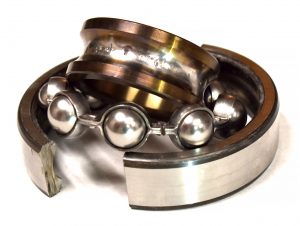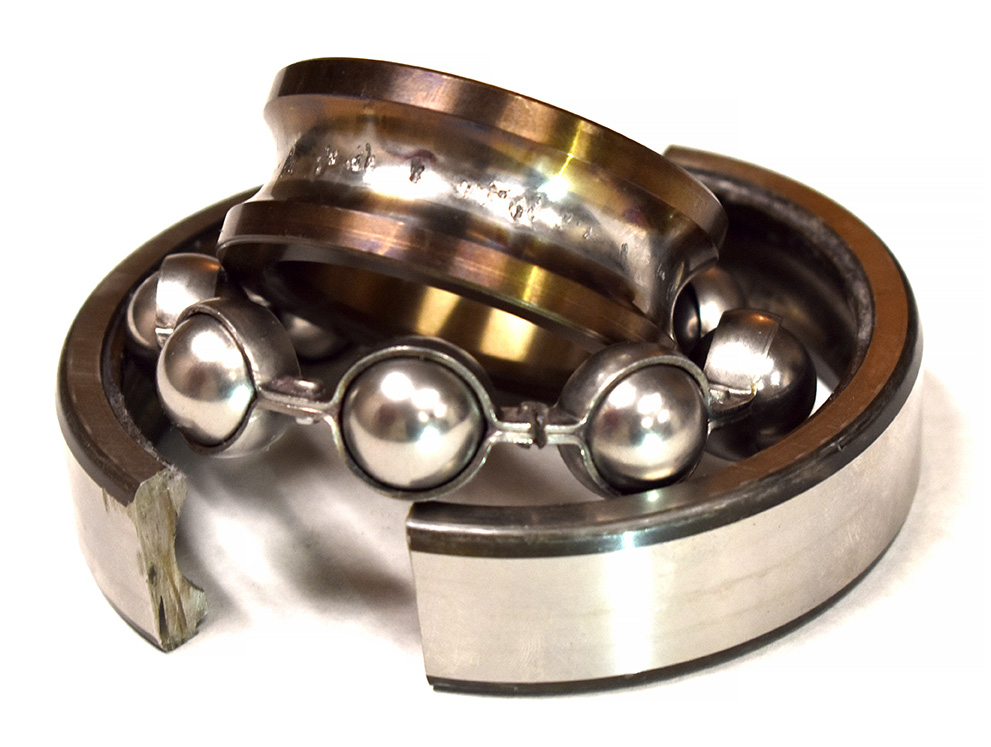 What’s that awful noise that you just heard from deep within the operating guts of one of your most critical pieces of equipment? That was your bearing━biting the dust and interrupting a critical operation━and you need to fix it, fast, because downtime is a productivity killer.
What’s that awful noise that you just heard from deep within the operating guts of one of your most critical pieces of equipment? That was your bearing━biting the dust and interrupting a critical operation━and you need to fix it, fast, because downtime is a productivity killer.
With a hundred different things consistently going on in your facility at once, there’s never a good time for a bearing failure. When you’re in this business of putting out fires, though, as industrial operations typically are, you give your attention to the one with the potential to do the most damage.
Bearing failure demands immediate attention because it can cost as much as $25,000-$50,000 per hour—in lost productivity, unplanned outages and downtime.
What’s interesting, though, is that the bearing replacement itself is almost always the cheapest part of the failure. A $50 bearing can take down a multi-million-dollar process. Therefore, it’s crucial to thoroughly assess the situation and determine the cause/source of the failure to prevent it from recurring. There are several reasons why bearings fail…
Here Are The Seven Most Common Reasons Why Bearings Fail:
1. Lubrication Failure
Lubrication should be one of the first points considered in troubleshooting a bearing failure. Because many options are available, lubricants are often misapplied.
For proper lubrication of rolling element bearings, adequate viscosity at operating temperature is required. Highly polished or discolored bearing raceways and rolling elements indicate that working surfaces do not have adequate viscosity at operating temperature. Surface roughening in contact, the result of insufficient oil film, is another indication of metal-to-metal contact wear conditions.
Lubrication failure is also inevitable if two incompatible greases are mixed. Grease color and consistency changes are a good indication of this problem.
Over-lubricating can also be as bad as under-lubricating. While under-lubrication risks metal-to-metal contact, over-lubrication causes heat build-up and friction as the rolling elements continuously try to push extra grease out of the way.
In addition to maintaining the correct oil levels, be certain to check for faulty bearing seals. Faulty seals often allow oil to escape, which results in premature wear and the need for frequent replacement.
2. Contamination & Corrosion
Dirt, sand, and water are the most common contaminants, but chemicals and other corrosives also cause problems. They can dilute the oil film, reducing viscosity, and they can corrode the bearing surfaces, disrupting the oil film and causing erosion, creating thousands of abrasive particles.
Clean work areas, tools, fixtures and hands help reduce contamination failures, according to Bearing Failure: Causes and Cures by Barden Precision Bearings. Keep grinding operations away from bearing assembly areas and keep bearings in their original packaging until you are ready to install them. Seals are critical━damaged or inoperative seals cannot protect bearings from contamination.1
3. Misalignment
Some, but not all, bearings can tolerate minor misalignments between shaft and bearing housing. However, in more serious cases, misalignment can be detected on the raceway of the nonrotating ring by a ball wear path that is not parallel to the raceway edges.
The most prevalent causes of misalignment are: bent shafts, burrs or dirt on shaft or housing shoulders, shaft threads that are not square with shaft seats and locking nuts with faces that are not square to the thread axis.1
Serious misalignments introduce excessive vibration and loads. To prevent bearing alignment problems, inspect the shafts and housings regularly, shim the housings as necessary and use precision grade locknuts.
4. Distorted Components
If a housing bore becomes distorted, excessive loads and wear will result. This problem arises when the housing is mounted to a pedestal that is not flat. If an out-of-round housing bore is suspected, correct the mounting surface before installing a new bearing.
The same principle also applies when aligning pillow block bearings. When adjusting height, even a fraction of an inch, fully support the complete pillow block base with shims. If the center portion of the block is unsupported, the housing bore can become distorted, leading to another failure.
Seals or shields can also become distorted inadvertently in the mounting process. When they are pushed in and damaged. they interfere with the functioning of the bearing cage or rolling elements and will permit contaminants to enter the bearing.
5. Poor Fitting
The bearing needs to be properly mounted to an accurately sized shaft.
If the shaft is oversized or expands, resulting in a tight fit, the internal clearance is reduced, causing wear from friction and heat. A heavy ball wear path in the bottom of the raceway around the entire circumference of the inner ring and outer ring indicates a tight fit.1
If the shaft is undersized or has a loose fit, the bearing creeps on the shaft. If the looseness is enough to allow considerable movement of the inner or outer ring, the mounting surfaces (bores, outer diameters, faces) will wear and create heat, causing noise and runout problems.1
In the case of an adapter sleeve mounting or a tapered bore bearing on a tapered shaft, looseness might indicate that the bearing was not properly mounted. Therefore, do not arbitrarily re-tighten the bearing.
Corrective action for an improper fit includes a decrease in total interference━better matching and proper mounting of bearings to shafts and housings━taking into consideration the differences in materials and operating temperatures.
6. Fatigue
Fatigue failure, usually referred to as spalling, is the fracture of the running surfaces and subsequent removal of small, discrete particles of material. Spalling can occur on the inner ring, outer ring or balls. This type of failure is progressive and, once initiated, will spread as a result of further operation. It will always be accompanied by a marked increase in vibration, indicating an abnormality.1
If premature fatigue is the result of excessive load, reduce the load or replace the bearing with one that has a greater capacity. Otherwise, consider redesigning to use a bearing with a greater calculated fatigue life.
7. Inadequate Internal Clearance
Lastly, internal clearance impacts the friction, load zone size and fatigue life of a bearing. If the internal clearance in a bearing is inadequate, excessive heat will build up. The increase in temperature then affects viscosity, causing lubrication problems. Ultimately, the internal friction can become so great that the bearing locks up.
The operating clearance required for a bearing to perform satisfactorily is application dependent. You must ensure that the bearing has a minimum initial internal clearance of a size that, when it is reduced due to the effects of mounting and other influences, is equal to or greater than the required minimum operating clearance.
Learn More About Barden Precision Bearings
Barden Precision Bearings is a sub-brand of The Schaeffler Group and the pre-eminent leader in super precision ball bearing manufacturing in the world today. Barden super precision bearings excel in applications where bearings of lesser quality have failed. If superior accuracy, reliability of operation, long-life, high running speeds and low noise and vibration are requirements in your application, Barden/FAG precision bearings are the bearings of choice.





